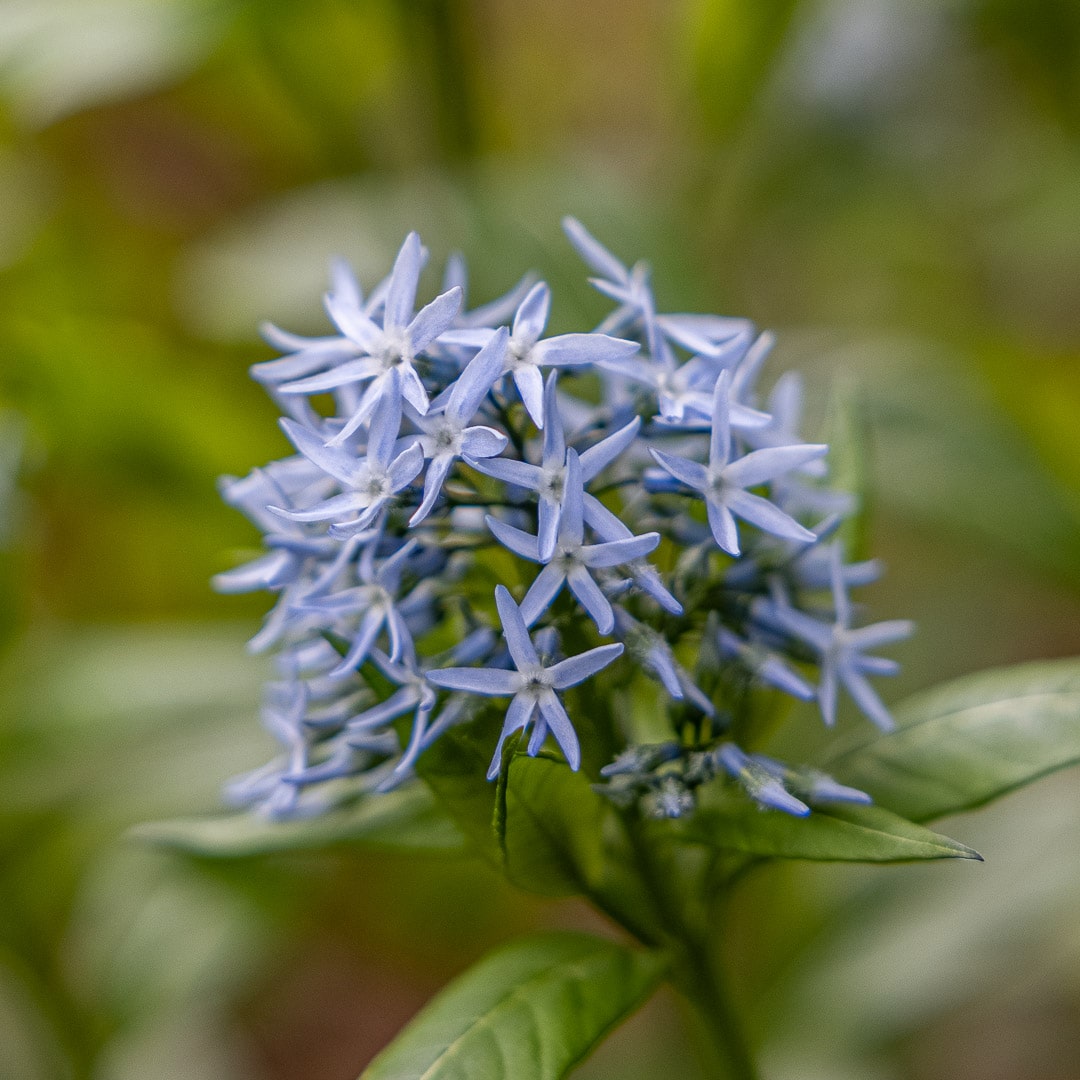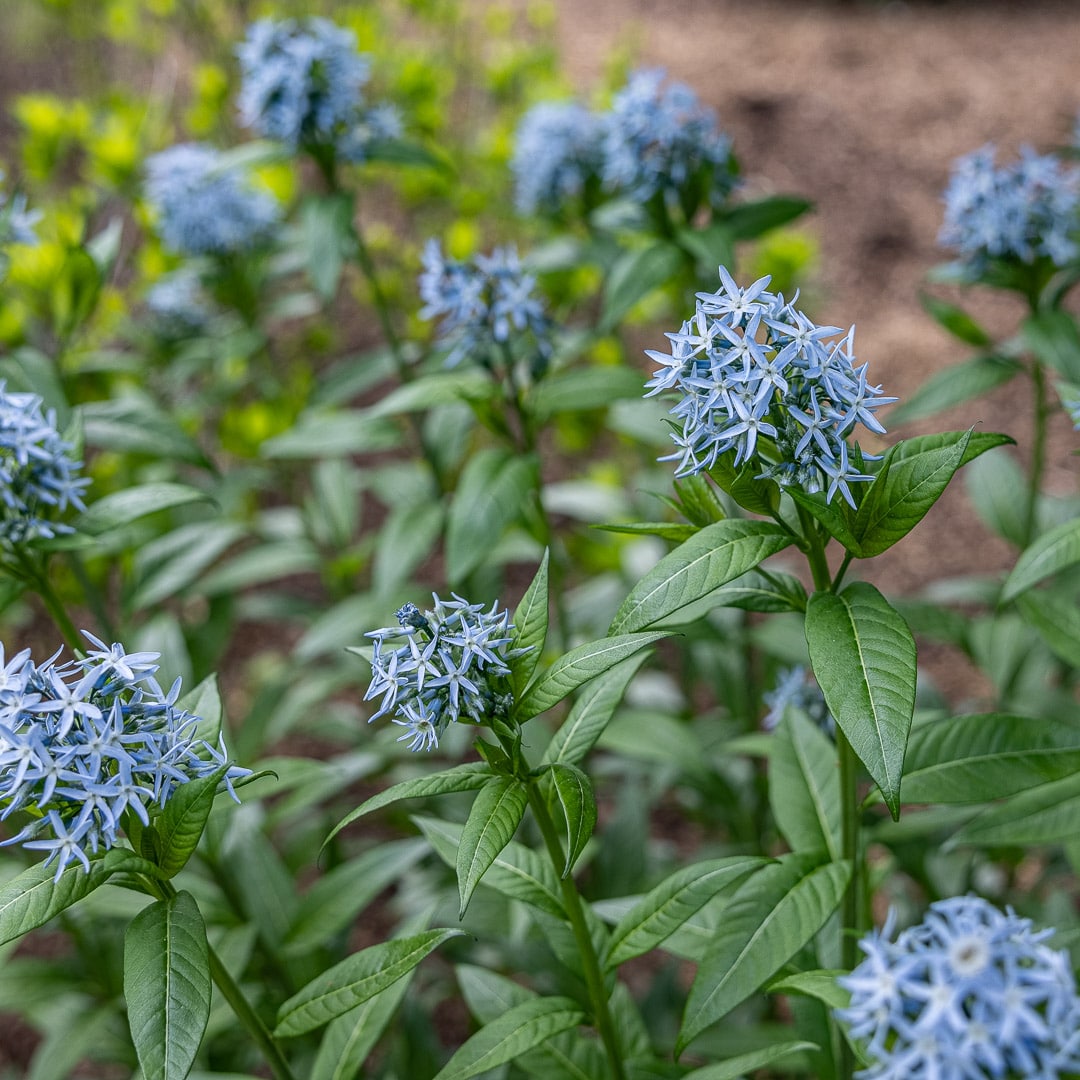Bluestar (Amsonia tabernaemontana) is a native to North America perennial that typically blooms in May. It has an wonderful upright mounded shape and gets covered in clusters of tiny blue flowers. It grows 2-3 feet tall and 2-3 feet wide and does best in full to part sun. Any less, and it may need staking to keep it upright. Eastern Bluestar handles a range of soils and, once established, is somewhat drought tolerant—a terrific perennial for a mixed perennial garden that also has nice yellow fall foliage too. Eastern Bluestar takes a few years to get up to size but its well worth the wait. It’s deer resistant and doesn’t have a lot of pest problems. Found in zones 4-9.
| Key Details | |
|---|---|
| Common Name: | Bluestar or Eastern Blue star |
| Botanical Name: | Amsonia tabernaemontana |
| Plant Type: | Perennial |
| Plant Description: | Spring-blooming perennial with upright mounded shape and clusters of light to medium blue flowers |
| Height: | 2’-3’ |
| Spread: | 2’-3’ |
| Foliage: | Green, turns yellow then light brown in the fall |
| Flower: | Small star like flowers in clusters |
| Bloom Time: | May |
| Site Conditions | |
| Climate: | Zones 4-9 |
| Soil Type: | Loamy. Moist well-drained soils are best. |
| Soil pH: | 5.5-6.5 |
| Soil Nutrients: | Low |
| Sun: | Full sun to part shade. Part sun optimal. |
| Specific Conditions: | Windy sites may necessitate staking |
| Style | |
| Style Considerations: | Nice upright vase like habit. Massing and grouping are great options. Medium texture foliage. Nice fall color too. |
| Maintenance | |
| Watering: | Watering weekly or biweekly if needed is typically best. Can handle some drought conditions. |
| Mulching: | Not required but always helps especially if you need to add organic matter to the soil. |
| Fertilizing: | Not needed if you have healthy humus-rich soil with plenty of organic matter. |
| Weeding: | Does a great job at stifling weeds due to its dense mound like foliage that keeps most weeds from getting through. |
| Deadheading: | You can cut it back about a half if it flops over in mid-summer or in fall. |
| Staking: | Eastern Bluestar needs full sun to have a nice compact habit. It will flop around if it doesn’t get enough sun. Consider staking in part shade conditions. Hoop stakes work well if placed early. |
| Dividing: | Yes, in early spring as they emerge or early fall |
| Transplanting: | Early spring when they start to appear or early fall is best but anytime works with sufficient watering. |
| Pruning: | See deadheading |
| Pests: | If planted in the right conditions it has few pests. |
| Winterizing: | Cut back any stems that remain 2-3 inches above the ground after the first hard frost or two (when the ground freezes). You can also use straw or pile some leaves over the plants. |






